Antarctica - Danco Island and Gentoo Penguins
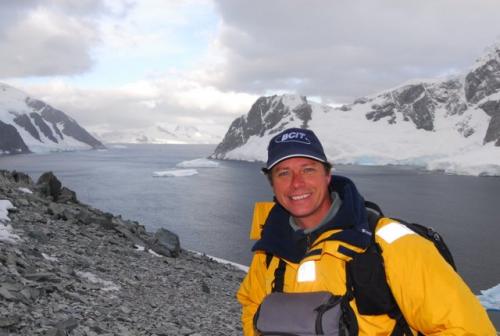
On Danco Island, Antarctica
We awoke to calm seas in the protected waters of the Antarctic Peninsula. The expedition ornithologist had presented a lecture on board (during our crossing of the Drake Passage) so we had an idea of what species of birds to expect. In fact the expedition staff present a range of lectures on natural history (from marine mammal biology, to ornithology, to geology and glaciology) when time permits. Today was to be my first opportunity to visit a penguin colony in Antarctica and I was excited about the opportunity!
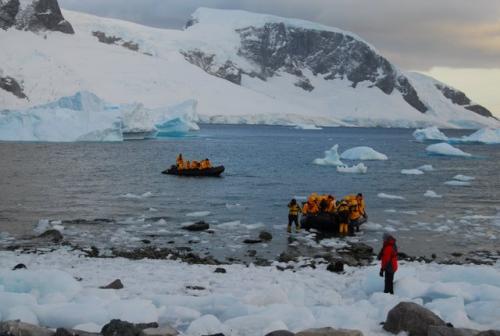
Zodiac Landing on Danco Island, Antarctica
It felt great to finally put my feet on solid land again and what a place to do it – Danco Island! It was cold (just below freezing) but refreshing. To get us to shore the zodiac drivers maneuvered their way from the ship to shore around chunks of sea ice and small icebergs. Once on shore we made our way across the ice and snow making sure we didn’t disturb the hundreds of Gentoo Penguins going about their business on the island.
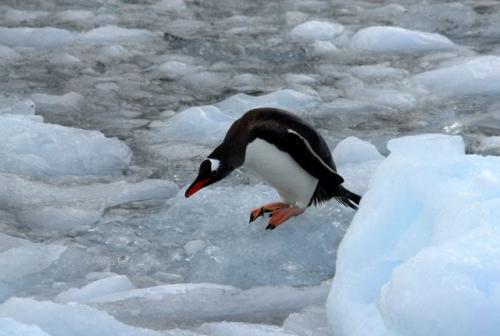
Adult Gentoo Penguin Heading to Shore to Feed the Chicks
The penguins making their way from the ocean and onto shore were adults returning from food gathering (foraging) and were on their way back to the colony to feed their chicks. The chicks though were not waiting right along the shore but instead were at the nest site located fairly high up on a nearby hill, a few hundred metres or so away from the shore. We watched the adults waddle their way up the hill to find their chick. Once found the chicks would peck at their throats and beaks and encouraging the parent to regurgitate the food directly into the penguin chick’s mouth. Yumm!
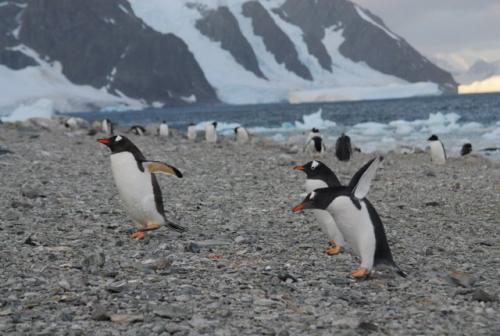
Adult Gentoo Penguins, Danco Island, Antarctica
What are the penguins eating (and feeding their young)? The vast majority of what they eat is krill. Krill is like a small shrimp and is a critical part of the food chain in polar waters (both in the Arctic and in Antarctica). There are many different species of krill but the long and short of it is that it is the major food item for a high percentage of Arctic and Antarctic wildlife species. In Antarctica, penguins, seals, whales and many birds have krill as the major food item in their diet.
It was certainly obvious that these Gentoo Penguins were feasting on krill as their pink coloured droppings (krill is pink in colour) were everywhere (including my boots and my jacket)!
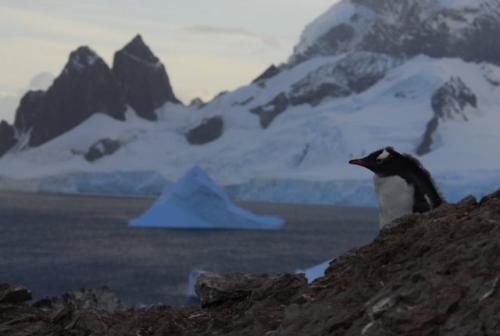
Juvenile Gentoo Penguin (Waiting to be Fed)
It was simply amazing to walk alongside the penguins on their march to and from the sea to the nest. You are not permitted to get too close to the penguins (you have to give them the right of way), but if they decide they want to get closer to you that is their decision. And that certainly happened.
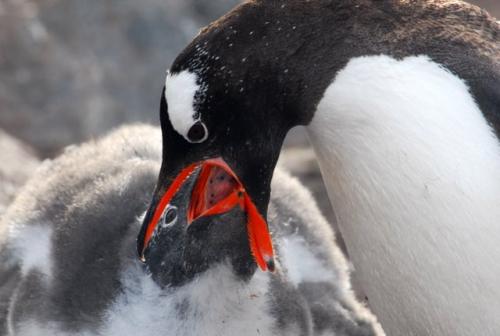
Adult Gentoo Penguin Feeding Chick (A Large Chick)
After feeding their chicks the adults simply head back down the hill (or hop), jump back in the sea and head off in search of more food. Although krill can be found in Antarctic waters in massive quantities (they say that the total weight of krill in the world’s oceans weighs more than the whole human population on Earth) but its distribution is patchy and the penguins (and other animals that feast on it) may have to travel great distances to find the food patch.
 Funded by TEK
Funded by TEK